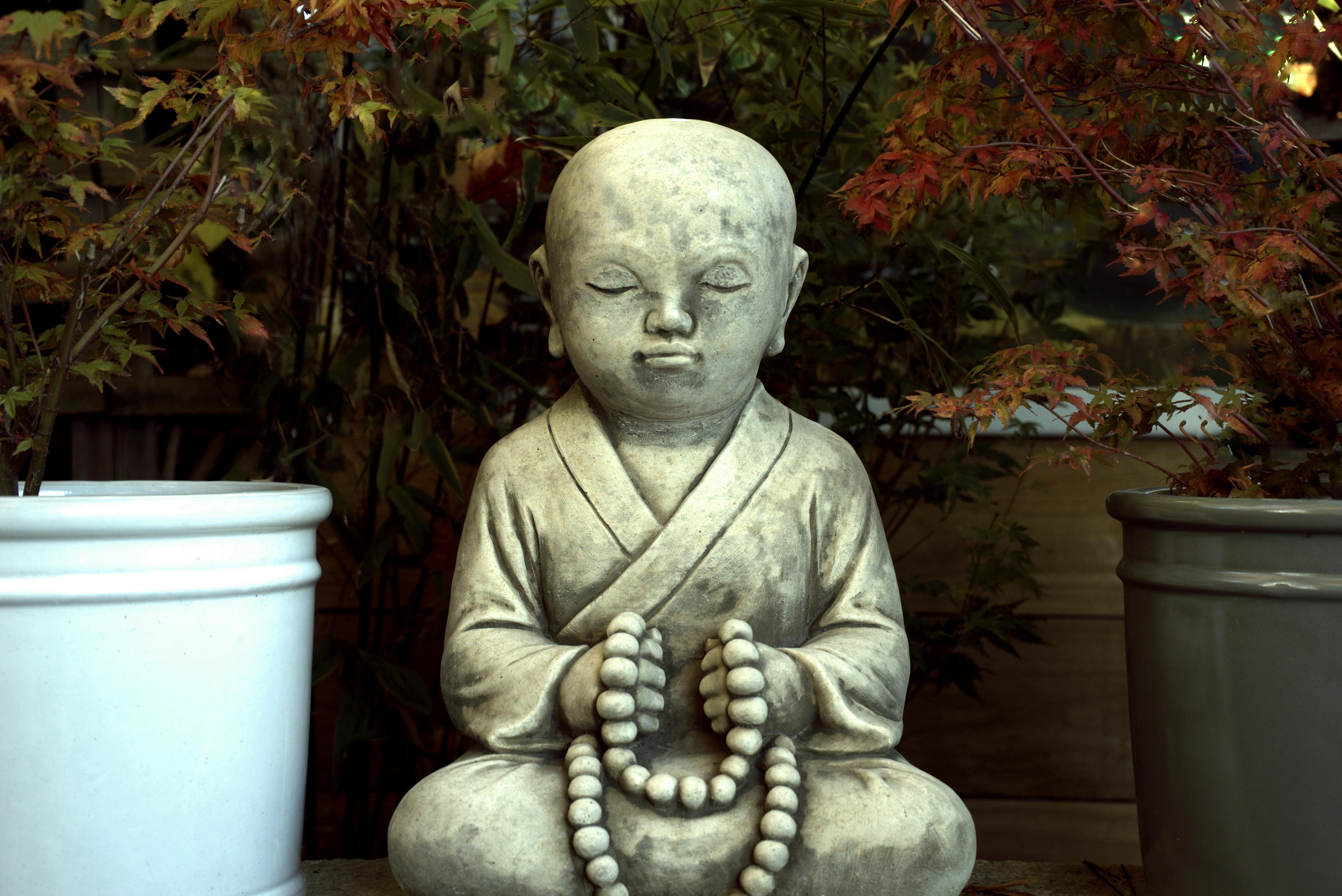Propagating a prayer plant is a great way to grow new plants from an existing one. Prayer plants are tropical plants that are easy to propagate and care for. The best way to propagate a prayer plant is through stem cuttings, which will produce an exact clone of the parent plant. This article will explain how to successfully propagate a prayer plant using stem cuttings.Prayer plant propagation is the process of growing new plants from existing plants through the use of cuttings, division, and other methods. It is a great way to increase your prayer plant collection without having to buy new plants. The basics of prayer plant propagation involve taking a cutting from an existing prayer plant and potting it in soil or water. Cuttings should be taken from healthy, mature plants so that they have a higher chance of survival. Ensure that you take the cuttings from healthy branches with no signs of disease or insect infestation.
The cutting should be trimmed and rooted in either soil or water. If rooting in soil, ensure that the potting medium is well-draining and contains plenty of organic matter such as peat moss or compost. Keep the soil moist but not soggy and place the pot in an area with bright, indirect light. If rooting in water, place the cutting in a jar filled with water and change out the water every few days to prevent bacteria growth. Place the jar near a window where it will receive bright, indirect light. Keep an eye on your cuttings for any signs of growth such as roots or new leaves which will indicate successful propagation!
Different Methods for Propagating Prayer Plants
Prayer plants are popular houseplants due to their unique foliage and easy-care needs. These plants are commonly propagated through division, but they can also be grown from cuttings or seed. Each method of propagation has its own advantages and disadvantages, so it’s best to understand the process before deciding which one is right for you.
Division is a great way to propagate prayer plants because it produces the most mature plants in the shortest amount of time. To divide a prayer plant, use a sharp knife or scissors to separate the root ball into smaller pieces. Each piece should contain several growing points with roots attached. Plant each piece in its own pot filled with moist potting soil and keep them in bright, indirect light until they become established.
Taking stem cuttings is another popular method for propagating prayer plants. Cut a 4-inch stem just below a node and remove any leaves from the lower half of the stem. Dip the end of the cutting in rooting hormone and plant it in moist potting soil, making sure that at least two nodes are below the soil surface. Keep your cutting out of direct sunlight until it has rooted.
Growing prayer plants from seed is possible but more challenging than other methods of propagation since the seeds must be kept at very specific temperatures and humidity levels during germination. Start by soaking your seeds overnight in warm water before sowing them in moist potting soil and placing them under fluorescent lighting or on a heated propagation mat set between 70–80°F (21–27°C). Keep an eye on your seeds as they will need to be misted frequently to maintain high humidity levels.
No matter which method you choose, patience is key when propagating prayer plants. All methods require some trial and error so don’t be discouraged if you don’t get it right away. With some practice, you’ll soon have plenty of healthy prayer plant babies thriving in your home!
Choosing a Plant and Pot
When it comes to choosing a prayer plant, there are a few things to consider. First, you’ll want to choose a healthy looking plant with bright green leaves and sturdy stems. Next, you’ll need to choose the right pot for your plant. Clay or terracotta pots are best because they absorb excess moisture and allow the soil to dry out between waterings. If you’re using a decorative pot, make sure it has a drainage hole so that excess water can escape.
Potting Soil
Once you’ve chosen your pot and plant, it’s time to select the right potting soil. Look for an all-purpose soil that is lightweight and well-draining. If necessary, mix in some perlite or vermiculite for extra drainage. Additionally, be sure to use a potting mix that contains some organic matter such as compost or peat moss. This will help keep the soil moist but not soggy.
Watering
Prayer plants need regular watering but they don’t like wet feet! To avoid overwatering, water deeply and then allow the top inch of soil to dry out before watering again. It’s also important to monitor your plant’s leaves – if they start drooping or curling up, it’s a sign that your plant needs more water.
Light and Temperature
Prayer plants prefer bright indirect light but can tolerate medium light levels as well. Avoid putting them in direct sunlight as this can burn their leaves! When it comes to temperature, prayer plants prefer temperatures between 65-80 degrees Fahrenheit (18-27 degrees Celsius).
Fertilizer
Finally, prayer plants benefit from regular fertilization during their growing season (spring through fall). Use an all-purpose fertilizer diluted at half strength every other week or monthly during their dormant season (winter). Be sure not to overfertilize as this can damage the roots of your plant.
Taking Stem Cuttings from a Prayer Plant
Taking stem cuttings from a prayer plant (Maranta leuconeura) is an easy and rewarding way to propagate new plants. Prayer plants are known for their beautiful foliage, with large, oval leaves in shades of green, yellow, and red. Taking stem cuttings is a great way to increase your prayer plant collection without spending money on new plants. Here’s how to do it:
First, choose healthy stems from the parent plant. Look for stems that are not wilted or discolored. Using a pair of sterile scissors or pruning shears, make a clean cut just below a node (the point where the leaves meet the stems). Make sure to cut at an angle so the cutting can absorb more water.
Next, remove the lower leaves of the cutting so that there will be fewer leaves competing for water and light once it is planted in soil. Dip the cut end of each cutting into rooting hormone powder or liquid and tap off any excess before planting.
Fill a pot with moistened potting soil mix and make several holes in it using your finger or a pencil. Place each cutting into one of the holes, making sure that the base of each cutting is at least one inch below the surface of the soil. Cover lightly with additional potting mix and water lightly.
Place your pot in bright indirect light and keep it out of direct sunlight until you see signs of growth. Be sure to keep the soil consistently moist but not soggy until you see new growth on your cuttings. Then reduce watering slightly but maintain regular watering for best results.
Once your prayer plant cuttings have taken root and begin to show new growth, they can be transplanted into larger pots with fresh potting soil mix. With proper care and attention, you should have plenty of beautiful prayer plant babies in no time!
Using Leaf Cuttings to Propagate a Prayer Plant
Prayer plants are beautiful houseplants that are easy to propagate. The most common method of propagating a prayer plant is through leaf cuttings. This method involves taking a cutting of the leaf from the parent plant and rooting it in soil or water. With the right conditions, this process can be successful in producing new plants. Here is a step-by-step guide on how to use leaf cuttings to propagate a prayer plant.
The first step is to choose healthy leaves from the parent plant. Look for leaves that are bright green and have no signs of disease or damage. You will need at least two or three leaves for the propagation process. Then, take a sharp knife or scissors and carefully cut off each leaf at its base, leaving some stem attached if possible.
Next, prepare your soil or water for planting the leaf cuttings. If you are using soil, make sure it is moist but not soggy and has good drainage. For water, use clean water that is room temperature and free of chlorine or other chemicals. Plant each leaf cutting so that the stem end is in contact with either the soil or water.
The next step is to keep your newly planted cuttings in bright, indirect light and maintain consistent moisture levels in either the soil or water. As long as you provide adequate light and moisture, your leaf cuttings should start producing roots within several weeks. When this happens, it’s time to transplant them into individual pots.
Finally, once your prayer plant cuttings have been transplanted into their own pots, keep them in bright indirect light and continue giving them consistent moisture levels until they become established plants with healthy foliage and strong root systems. With proper care, these new prayer plants should thrive for many years!

Using Rhizome Division to Propagate a Prayer Plant
Prayer plants are a type of houseplant that features beautiful foliage with intricate patterns. These plants can be propagated using rhizome division, which is a process that involves separating the roots and replanting them. This method is simple and effective, and it allows you to create new plants from an existing one. Here is how you can propagate a prayer plant using rhizome division.
The first step is to choose the right plant for propagation. Look for a prayer plant that has thick, healthy roots and multiple crowns (the point at which the stem meets the roots). The more crowns the better, as this will give you more options for dividing the plant. Once you have selected your plant, it’s time to prepare it for propagation.
Gently remove the soil from around the roots of your prayer plant and inspect them. You should look for any areas that have been damaged or diseased, as these areas should not be used in propagation. Cut away any diseased or damaged parts before proceeding.
Once you have inspected the roots, it’s time to divide them into smaller sections. Use a sharp knife or pair of scissors to carefully separate the root system into several smaller clumps. Each clump should contain at least one crown and some healthy roots. If there are fewer than three crowns in each clump, leave those sections intact.
Now it’s time to replant your newly divided prayer plants! Prepare individual pots with a light potting soil mix and moisten them prior to planting. Carefully place each clump into its own pot and cover with soil up to the base of each crown. Water lightly and keep in bright indirect light until fully established.
Finally, monitor your newly propagated prayer plants for signs of growth or disease over the coming weeks or months. With proper care, they should begin to grow quickly! Rhizome division is an easy way to propagate prayer plants and add more varieties of this beautiful houseplant to your home garden collection!
Potting and Caring for New Prayer Plants
Prayer plants are attractive foliage plants that are easy to grow indoors. They have attractive foliage with delicate, colorful patterns on the leaves. When potting and caring for new prayer plants, there are a few essential steps to take to ensure they thrive. It is important to choose the right potting soil, provide adequate light, water regularly, and feed the plant with fertilizer.
When potting a prayer plant, it is important to choose a pot that has drainage holes in the bottom. This will help prevent root rot and other issues caused by overwatering. Use a good quality potting soil that is well-draining and contains organic matter such as peat moss or compost. It is also important to ensure the soil is not too wet or too dry.
Prayer plants need bright light but should not be placed in direct sunlight as this can cause leaf scorch. A south-facing window or east-facing window are ideal spots for prayer plants. If you do not have access to natural light, you can use artificial lighting such as fluorescent bulbs or LED lights placed close to the plant but not directly above it.
Watering your prayer plant regularly is essential for healthy growth. Water when the top inch of soil feels dry – usually once a week in spring and summer and every two weeks in winter – making sure not to overwater as this can lead to root rot and other issues. Feed your prayer plant with an all-purpose liquid houseplant fertilizer every two weeks during Spring and Summer months.
With proper care, your prayer plant will thrive indoors bringing beauty into any home or office space for many years!
Identifying Common Challenges with Prayer Plant Propagation
Prayer plant propagation can be a challenging process, as this particular species of houseplant requires a unique set of conditions in order to thrive. While the prayer plant is generally quite easy to care for once it is established, getting the initial propagation process right can be tricky. There are a few common challenges that can arise when propagating prayer plants, such as difficulty in finding viable seeds and ensuring proper humidity levels. Understanding these common issues and taking the necessary steps to address them can help make your prayer plant propagation journey a success.
One of the biggest challenges when it comes to prayer plant propagation is finding viable seeds. Prayer plants are typically propagated through division or cuttings, but it is also possible to grow them from seed. However, obtaining viable seeds can be difficult since many suppliers offer older, non-viable seeds. To ensure you are getting the best quality seeds for your project, look for suppliers that only offer freshly harvested prayer plant seeds that have been stored properly.
Another key challenge when propagating prayer plants is providing the right level of humidity. This species of houseplant requires high levels of humidity in order to thrive, making indoor environments less than ideal for successful propagation. To ensure your plants get enough moisture and humidity, you may need to invest in a humidifier or use other methods such as misting or using a tray filled with water and rocks beneath the pot for additional moisture retention.

Conclusion
Prayer Plant is an easy to grow houseplant that will look beautiful in any home and is sure to bring a bit of life to any room. Propagating the Prayer Plant is easy and can be done with either stem cuttings or division. Stem cuttings should be taken in spring or summer when the plant is actively growing, while division should be done when repotting the Prayer Plant in the fall. When propagating with stem cuttings, make sure to let the cut end callous over before planting it into soil. It’s also important to make sure that you provide your Prayer Plant with plenty of light, humidity, warmth and water so it can thrive and continue to spread its unique beauty.
With a little bit of effort and care, you’ll be able to propagate your Prayer Plant quickly and easily, creating a beautiful plant that will last generations.

